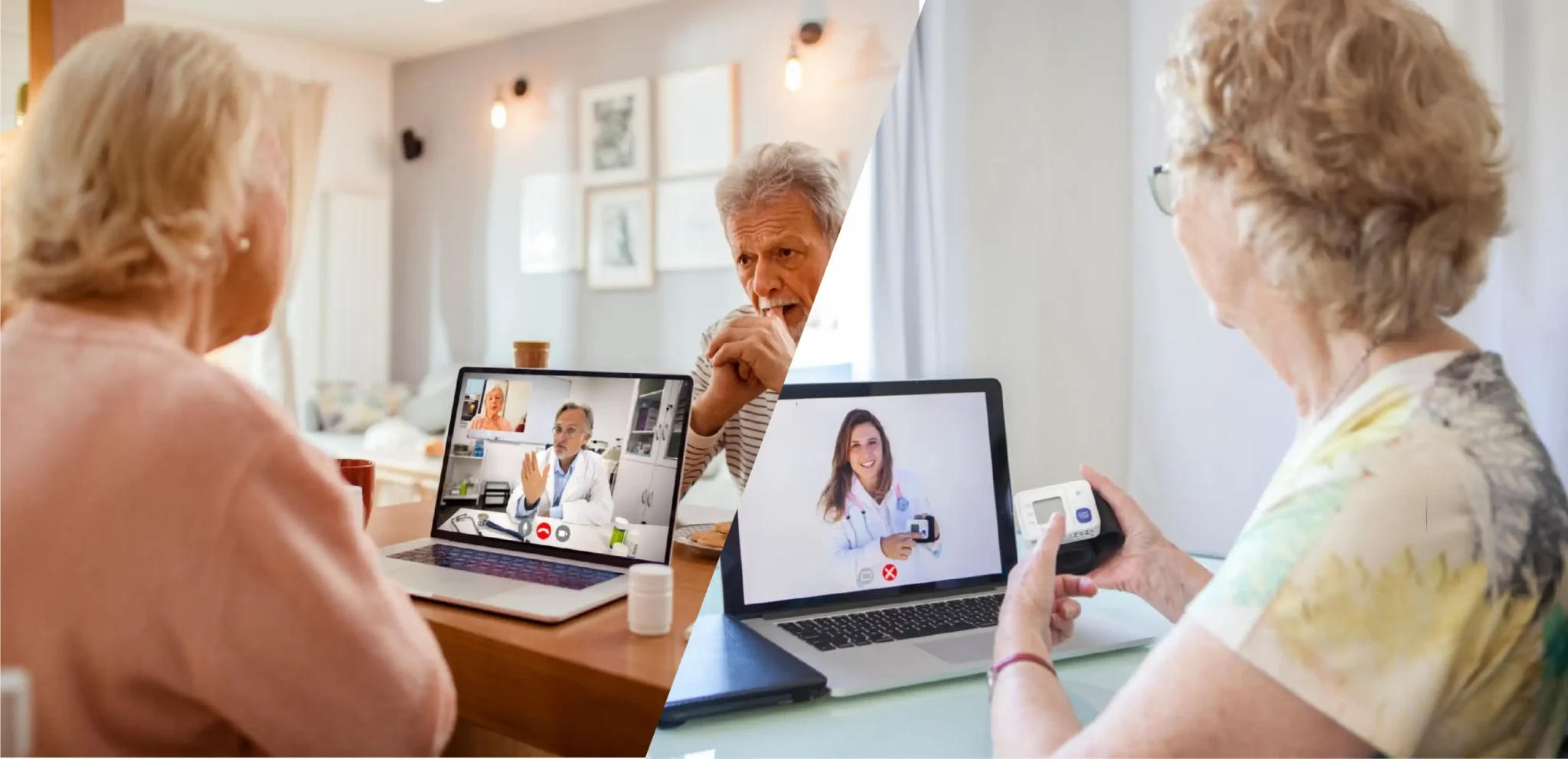

Telehealth has emerged as a pivotal component in the landscape of healthcare services. As medical practices progressively shift towards virtual care, telehealth opens up new avenues for patients, providing them with easier access to medical professionals and enhancing their ability to receive the care they need.
However, this evolution is not without its challenges. As we embrace the convenience of telehealth, several obstacles, particularly in the era of remote patient monitoring (RPM), need to be carefully addressed. In this blog, we will delve into these challenges, shedding light on the complexities of telehealth in RPM and seeking solutions to overcome them.
Healthcare providers face a unique set of challenges. These obstacles, while distinct from those encountered by patients, are crucial in shaping the effectiveness and reach of telehealth services. Let’s explore these challenges in detail, focusing exclusively on the provider’s perspective.

One of the primary challenges for providers is the need for adequate technical knowledge and infrastructure. This includes not only having the right hardware and software but also ensuring robust internet connectivity and cybersecurity measures.
Providers must be adept at using telehealth platforms, which can be a steep learning curve, especially for those more accustomed to traditional in-person consultations.
Compliance with healthcare regulations is a significant challenge. Providers must ensure compliance with laws like HIPAA in the U.S., which governs the privacy and security of patient information.
The shift to telehealth requires stringent data protection measures to safeguard patient confidentiality in a digital environment.
Providers often face uncertainty about insurance coverage for telehealth sessions, differing state laws, and the intricacies of billing for virtual consultations, which can differ significantly from in-person services.
Providers need to integrate telehealth solutions with their existing electronic health records (EHR) systems. Ensuring seamless interoperability between different technologies and platforms is critical to maintaining efficient workflows and accurate patient records.
Telehealth poses unique challenges in maintaining the quality of care. The inability to perform physical examinations can limit diagnostic capabilities. Providers must adapt their assessment skills to a virtual environment, relying heavily on patient-reported symptoms and visual cues, which may not always be as revealing as a physical examination.
Engaging patients effectively through a digital medium requires different skills and approaches compared to in-person interactions. Providers must find ways to build trust, and effectively communicate via telehealth platforms, which can be challenging without the nuances of face-to-face communication.
Balancing telehealth appointments with in-person consultations can be a logistical challenge. Efficient time management and scheduling are essential to avoid overburdening healthcare providers and ensure timely care for all patients.
While telehealth offers a range of benefits, including convenience, accessibility, and the potential for improved patient engagement, it also comes with its own set of challenges that can impact patients’ experiences. Understanding both the benefits and challenges of telehealth is essential for patients to make the most of this healthcare delivery method. Let’s explore these challenges in detail:
Access to Technology and Digital Literacy: Despite the benefit of remote consultations, a significant challenge is access to the necessary technology. Not all patients have the required devices or internet connectivity.
Digital literacy is also a crucial factor; some may struggle with using telehealth platforms, undermining the benefit of increased accessibility.
Internet Connectivity Issues: Reliable internet is vital for telehealth. Patients in areas with poor connectivity may face interruptions during consultations, diminishing the benefits of real-time communication and convenience.
Privacy and Security Concerns: Telehealth’s benefit of sharing and storing data digitally brings with it concerns about privacy and security. Patients may worry about the safety of their health information, which is a significant challenge in the digital health landscape.
Personal Connection with Healthcare Providers: While telehealth offers the benefit of connecting with providers regardless of location, it can limit the personal interaction that is often established in face-to-face visits. This can be challenging for patients who prefer a more personal connection.
Understanding Medical Instructions: Telehealth facilitates direct communication with healthcare providers, but receiving instructions over a digital medium can lead to confusion, especially for those with comprehension difficulties, challenging the benefit of clear communication.
Limitations in Clinical Assessment: Telehealth’s benefit of avoiding physical visits comes with the challenge of limited clinical assessments. The inability to conduct physical examinations can impact the comprehensiveness of care.
Insurance and Cost Concerns: Although telehealth can be cost-effective, patients often face uncertainty regarding insurance coverage and costs, which can be a barrier to accessing these services.
Scheduling and Technical Glitches: The convenience of scheduling telehealth appointments can be offset by technical glitches, which can lead to frustration and missed consultations.
Global Touch is at the forefront of revolutionizing telehealth, offering solutions that cater to the needs of both healthcare providers and patients. Our approach is centered around simplifying the complexities of telehealth, making it more accessible and efficient for everyone involved.
For healthcare providers, our solutions tackle the challenges of remote patient monitoring, chronic care management, and preventive care. We focus on creating user-friendly software that enhances the care delivery process, making it easier and more effective. This allows healthcare professionals to focus on what they do best – providing personalized, high-quality care to their patients.
Patients stand to benefit greatly from the convenience and ease of access that our telehealth solutions provide. With tools designed for simplicity and ease of use, managing health becomes more straightforward, even for those who are not tech-savvy. This bridges the gap between advanced healthcare technology and daily usage, ensuring that everyone can enjoy the benefits of telehealth without the hassle.
Talk to an Expert Now